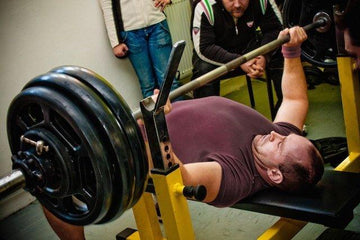

Full vs. Partial Reps for Maximal Muscle
Table of Contents

Full Range vs. Partial Reps for Maximal Muscle
We have all seen that guy in the gym who has the entire weight stack loaded up and is doing a range of motion that is about an inch. According to new research, not doing a complete range of motion is going to shorten your gains. Researchers examined the differences between longer and shorter range of motion (ROM) and the time course of any changes during detraining. Subjects undertook eight weeks of resistance training and four weeks of detraining. Muscle size, architecture, subcutaneous fat, and strength were measured at Weeks 0, 8, 10, and 12. A control group was also monitored during this period.

At the end of eight weeks, significant post-training differences existed in strength, muscle mass, and subcutaneous fat, with the long-range group exhibiting greater adaptations than the short-range group. De-training resulted in significant deterioration’s in all muscle parameters in both groups, with the short-range group experiencing a more rapid relative loss of post-exercise increases in strength than that of the long-range group. Greater morphological and architectural resistance training adaptations in the long-range (owing to higher mechanical stress) resulted in a more significant increase in strength compared with that of the short-range. The practical implications are that long range of motion should be observed in resistance training where increased muscle strength and size are the objective, because, as we demonstrate here, ROM shouldn’t be compromised for greater external loading. In simple terms, make sure you perform a full range of motion when your doing exercise.
Pinto RS, Gomes N, Radaelli R, Botton CE, Brown LE, Bottaro M. Effect of range of motion on muscle strength and thickness. J Strength Cond Res. 2012 Aug;26(8):2140-5.
MUSCLE MEDIA MAGAZINE FOR MEN
The premier source of training, nutrition, supplements, fat loss and health for men.

















